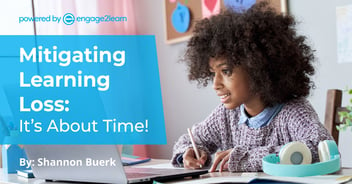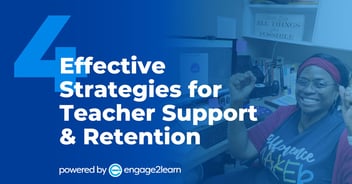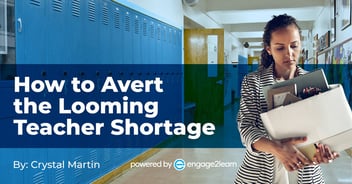The Problem with Teaching to the Middle
The Tier 1 Myth
As an educator, have you ever struggled with the great mystery of how to differentiate Tier 1 instruction? Most teachers can say they have spent a great amount of time, energy, and resources on individualizing Tier 2 and even Tier 3 instruction, trying to close the gaps for learners who aren’t quite at grade level or who are struggling with more significant learning problems that prevent them from mastering the standards.
However, when it comes to Tier 1 instruction, educators have historically been taught that this level of instruction must be universal. In other words, Tier 1 instruction must be “one size fits all.” But is this really true? Must our primary level of instruction be this generalized?
What if there was a way to embed Tier 2 and 3 instruction into the fabric of the learning experience for every student?
Lessons from a Pandemic
The level of uncertainty brought on by the COVID-19 pandemic left educators and leaders scrambling to provide the best support possible for learners, despite the many learning interruptions. but educators have continued to innovate to meet learners’ needs time and time again.
There are many takeaways from these unparalleled semesters. Many of these lessons were positive:
- First, children are resilient. They are capable of adapting to new situations and circumstances, perhaps sometimes even faster than we do ourselves.
- Second, students love to be seen and recognized. Even if it is through the screen, most students crave personalized connection.
- Third, we can connect virtually. While it hasn’t been easy, we have found a way to continue to teach, and our students have continued to learn.
Some lessons, however, have showcased the chasm in Tier 1 instruction, many of which educators were already very aware of:
- The existing concept and skill gaps between students were highlighted. Many of these gaps existed prior to the pandemic, but were exacerbated by distance learning.
- Students learn concepts and skills at different speeds. Because of this, many are overwhelmed by whole-class instruction, or in some cases, underwhelmed.
- A one-size-fits-all instructional method no longer works – if it ever did.
So, if learners long for personalized instruction, are able to quickly adapt, and learn at different rates and in different ways, why is Tier 1 instruction still considered something that must be standardized?
“Teaching to the Middle”
If you’ve worked in education at all, you’ve heard the old adage “teaching to the middle.” While the concept in theory is based on inclusivity, in practice it’s very exclusive. As with most things, students fall across all ranges on the learning spectrum, and very few actually land in the middle.
For students who aren’t yet learning at grade level, teaching to the middle leaves them behind as they struggle to catch up to where instruction begins. And, while most educators work especially hard to recognize and help students who are academically behind reach at least grade level, how many teachers struggle with knowing what to do for the students in their class who are above grade level? Unfortunately, in the current mindset of education, being a student learning above grade level simply equates to more work, not necessarily more in-depth instruction.
So, not only are learners being left behind in whole group instruction, many are being abandoned on their road to learning because they are simply too far ahead.
The concept of teaching to the middle is also appealing because there is only so much one teacher can teach in a day, right? In a classroom with 20 to 30 children, how can one educator be expected to individualize their lesson to every student, going up and down the ladder of content to reach the students on every rung? There has to be a better way to meet the needs of all learners through individualized instruction that won’t also leave the teacher running around the classroom, wishing they could clone themselves – times ten.
Enter, the Buerk Method for Learning
Given what we have experienced in the past 18 months, the 2021-2022 school year may well be one of the most significant in modern history. Educators are being asked to close learning gaps that have either emerged during or been exacerbated by the pandemic. Their role has been amplified, as they find themselves needing to teach the current standards and help students learn at grade level, while also trying to make up for lost time.
But how can one teacher – especially in the midst of a nationwide teacher shortage – possibly meet the varying needs of 20+ students every day?
What if it were possible to create something that could guide learners individually through the standards, working their way from where they are to where they need to be?
Enter the Buerk Method for Learning. The Buerk Method provides a standards-aligned, personalized path to learning that breaks down and scaffolds the entire learning experience into four skills levels. This enables the teacher and the learner to get the clearest picture possible of their current reality and the next step for growth. It creates differentiated, individual Tier 1 instruction for all learners.
The Buerk Method is a way for educators to take a skill and instantly scaffold it, creating resources, activities, and assessments that allow a student to move through the standard at their own pace. It doesn’t require the teachers to guide the students through the standard, or provide whole class instruction. Instead, all of the levels of learning are provided for ahead of time.
Key to the successful implementation of the Buerk Method for Learning is the Buerk Rubric. Whereas a traditional rubric is primarily product-focused and utilized for grading, a Buerk Rubric is a student growth tool that is process and behavior focused. The Buerk Rubric is the primary learning tool that teachers can give their students. By breaking down a skill into four levels, a teacher can differentiate the standard for their students, and then the students can move at their own pace through the standard. What does this look like?
With a Buerk Rubric, a student who is on-level or meeting expectations begins at level three. Levels one and two meet students who are below grade level, giving them a place to begin, while level four provides more advanced or in-depth learning opportunities for students who are ahead. Most importantly, the Buerk Rubric can be used by students to set goals, create a plan for learning, and track learning along the way.
How can you implement a Buerk Rubric in your classroom?



